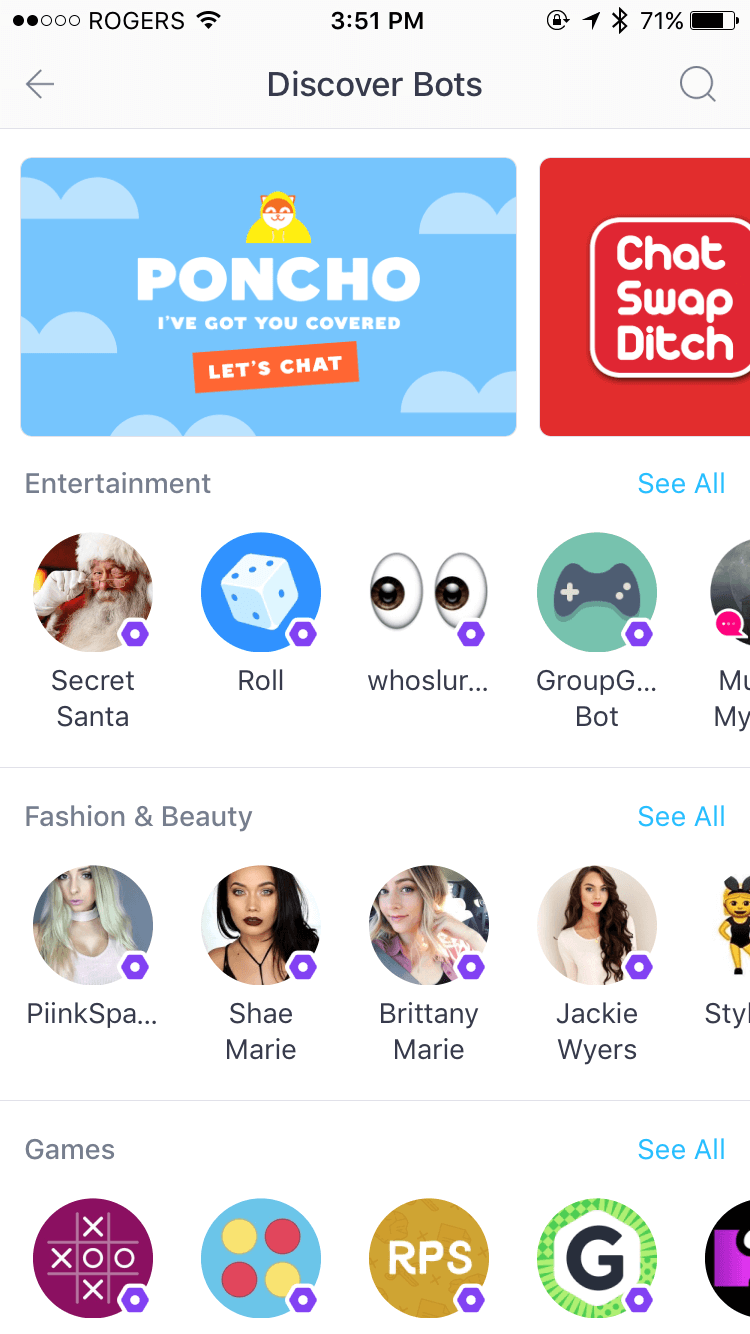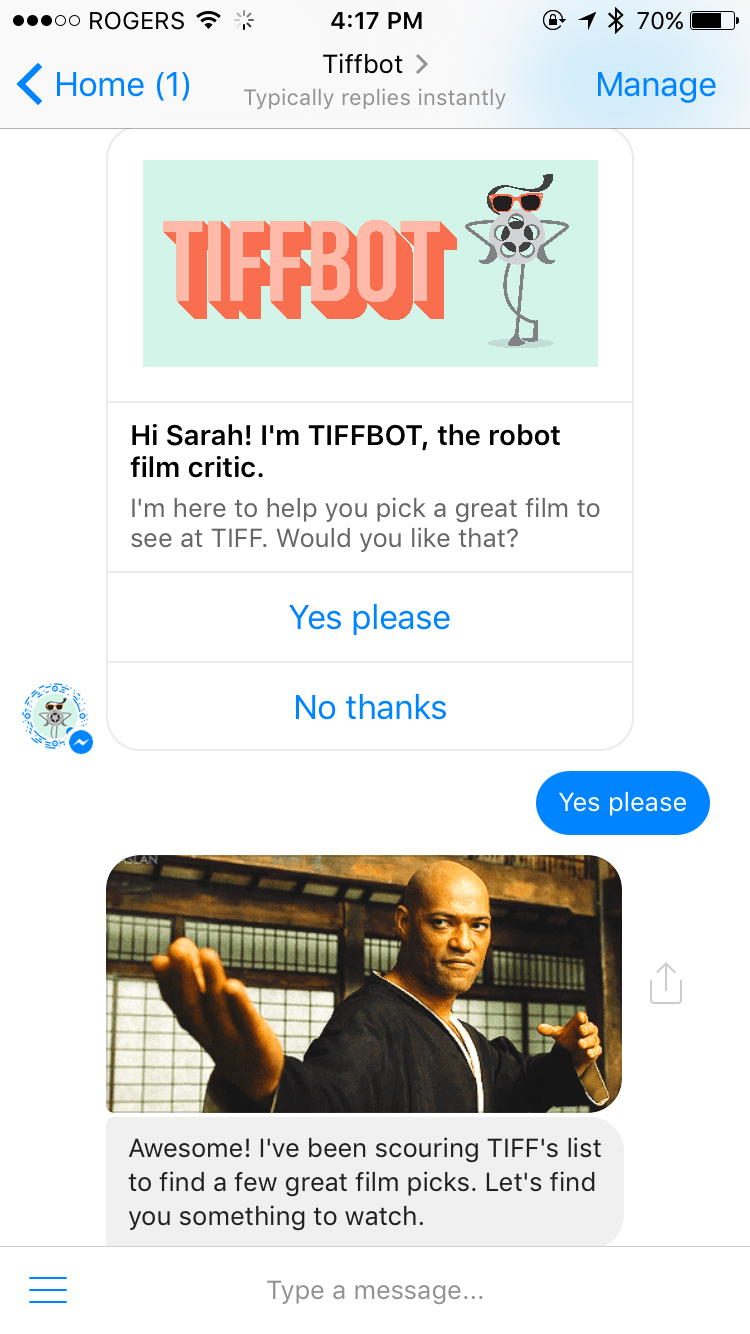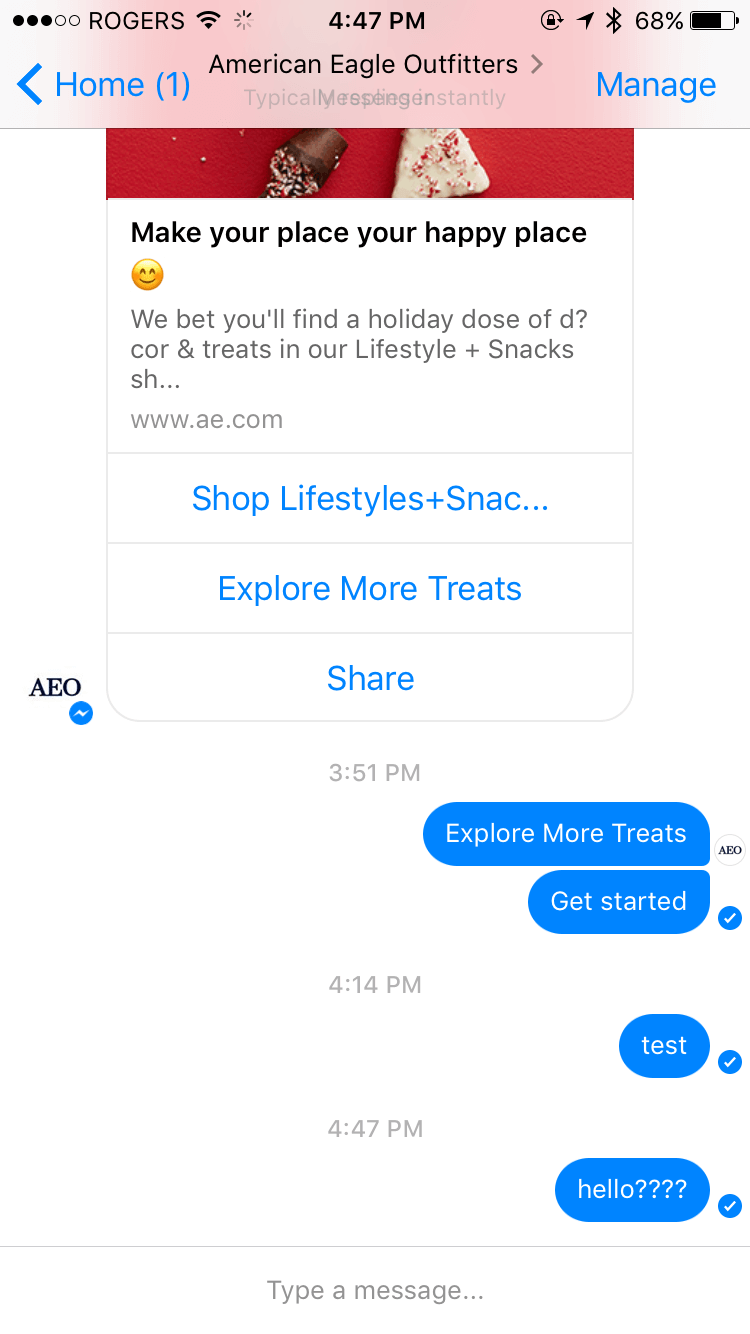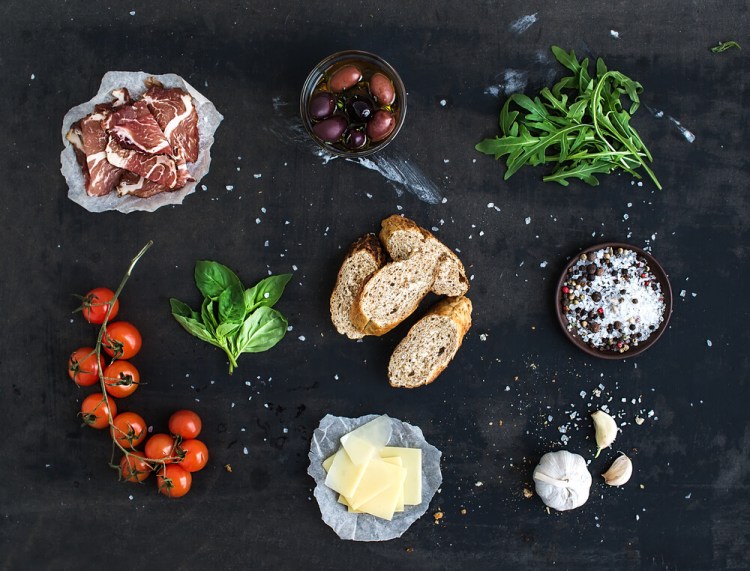2016 may not have been the year of the bot, as some anticipated, but early use cases for bots did emerge, as did valuable lessons for those of us who believe the future of B2C communication will be a human-automation hybrid. When Facebook Messenger first proclaimed the future of commerce was messaging in April 2016, it provided companies with a viable distribution mechanism (to over 1 billion monthly active users and growing) but excluded an important element in the equation — a discovery mechanism.
Developers and brands who chose Kik as their distribution platform fared a bit better, as Kik’s official Bot Shop launch allowed discoverability and curation within multiple categories, modeled after Apple’s App Store. By August over 20,000 bots had been created on Kik’s Bot Shop.
At the time Facebook Messenger announced it was supporting payments in September, over 30,000 bots had been built on Messenger. Although that’s a far cry from the 2 million-plus apps in both Apple and and Google’s app stores, discoverability remained a hurdle for bot creators.
This hurdle was somewhat easier for consumer-facing companies with significant social media followings, which were able to leverage a pre-existing audience in the messaging apps that consumers were already using for personal conversations. Now that brands don’t have to settle for push communication to a mass audience, they can leverage chatbots to execute digital marketing campaigns specific to the company’s unique promotions and product releases.

Above: Kik’s Bot Shop
Notable examples can be found across multiple verticals:
- Retailers like Nordstrom and American Eagle took advantage of the holiday season with interactive gift guides to help customers navigate their gift list.
- Media companies like Disney promoted new movies by letting users solve crimes alongside Zootopia’s Judy Hopps.
- Beauty companies like Sephora and CoverGirl shared makeup tips and beauty routines.
- Film festivals like TIFF got into the action, helping moviegoers decide which showings to attend with personalized recommendations based on genre.

Above: TIFFBOT
Messaging platforms lend themselves particularly well to marketing campaigns — chatbots enable businesses to combine scale with personalization, two goals that can often be mutually exclusive. Think billboards and TV commercials versus Tupperware and jewelry parties. The former offers significant scale (millions of eyeballs), but no personalization (and minimal targeting based on broad geographic and/or demographic limitations). The latter is hyper-personalized, but one-on-one conversations don’t scale. In contrast, chatbots enable brands to simultaneously reach millions of users, while letting users choose inputs and engage in a personalized conversation relevant to their specific interests and demographics. In other words, it’s no surprise companies are turning to chat to connect with their consumers.
Yet for all the benefits messaging platforms provide — namely bidirectional, continuous interactions between businesses and consumers — they also require a major shift change in how brands approach marketing campaigns. At a technical level, when marketing campaigns migrate to chatbots rather than in-app notifications or websites, messaging platforms take the role that apps and browsers once held. In the old model, when a marketing campaign ends, so too does the link to the campaign in that app or browser. After the holidays, there are no more push notifications to an in-app gift guide or holiday-themed graphics and pages on the website.
Not so on messaging platforms. Unlike traditional marketing campaigns, when the experience ends, the bot still remains accessible to consumers and the conversation history lives on. As individuals, we navigate back to an old chat with a friend to restart the conversation, or share a memorable message or funny GIF with a different friend. This opportunity now exists for brands.
Put yourself in the shoes of your consumer. Spotted a cute sweater in a holiday gift guide that you can finally afford with the cash given to you over the holidays? Can’t remember the name of that award-winning documentary you didn’t have time to see during the film festival? Just want to resend that hilarious GIF a chatbot sent you? Now past conversations with brands live in your messaging app’s inbox. Consumers aren’t going to revisit conversations with chatbots en masse, but the door to doing so has been opened, and brands need to plan how they’ll interact with users during the hiatus between campaigns.
This is a major shift change for marketers — messaging platforms as a home for marketing campaigns create opportunities for deeper engagement, but they also increase the burden on companies. Most brands I’ve tested are falling short in their approach to filling the hiatus between promotions (or, more accurately, not filling it). After a marketing campaign ends, most brands are shutting down the chatbot and leaving their inbox unmanned once again.

Above: American Eagle bot
This is a huge lost opportunity for a company that just made a meaningful connection with its user base. To fully realize the potential of bots, at the very least companies need to be creating landing page-style messages to redirect users to a website during the hiatus between campaigns. Better yet, avoid that hiatus by setting up continuous campaigns that inform consumers about ongoing promotions and product releases. A digital marketer would never dream of letting customers open a blank app or 404 page — it’s time to adopt that thinking for chatbots.
VentureBeat's mission is to be a digital town square for technical decision-makers to gain knowledge about transformative enterprise technology and transact. Learn More

